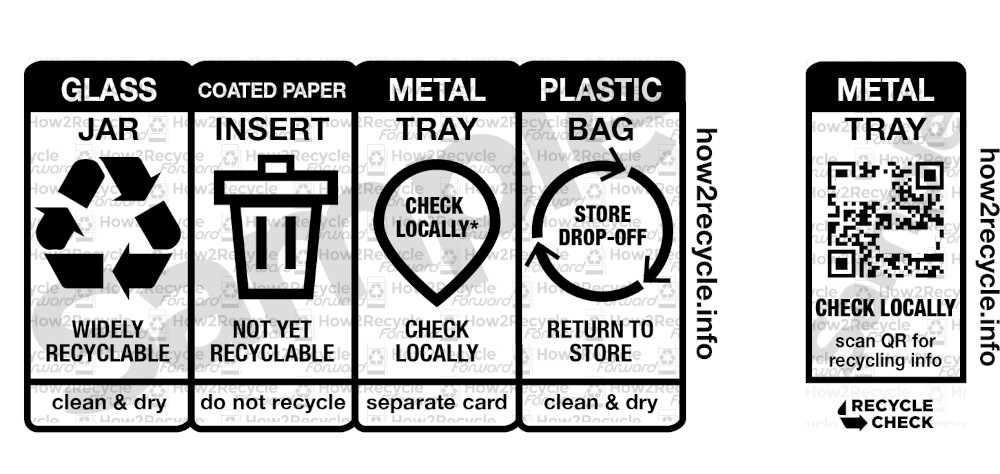GreenBlue — the environmental nonprofit behind the
US’s most recognized disposal-instruction label,
How2Recycle — has unveiled
How2Recycle
Plus. The
new, dynamic label features The Recycling
Partnership’s Recycle Check QR code and
will provide trusted, real-time local recycling and disposal instructions to
consumers across the US beginning in 2025.
The announcement follows How2Recycle’s unveiling of How2Recycle Pro — a
refreshed version of its legacy label designed to be actionable, clear and
compliant with new regulations. The label design refresh marks a new chapter for
North America’s most recognizable on-pack label; and now, How2Recycle’s more
than 800 members will be able to adopt the dynamic How2Recycle Plus featuring
Recycle Check label — bringing the newly integrated label to packages
nationwide.
“How2Recycle has the consumer recognition — 8 in 10 Americans recognize our
labels — and the brand reach to make it an obvious choice and a simple solution
in the evolving world of recycling policy and consumer education,” said
GreenBlue Executive Director Paul
Nowak. “Now for the first
time, we have the data and technology to link national brand packaging with
local recycling program acceptance.”
This new label offering comes after a year-long pilot that paired the widely
recognized How2Recycle legacy label with The Recycling Partnership’s Recycle
Check QR code, which covers all residential recyclables — including paper,
plastics, metals and glass.
Now, when brands opt to adopt the How2Recycle Plus label featuring Recycle
Check, the label lets consumers scan the QR code, enter a zip code or allow
location permissions and receive a clear, yes-no answer on whether a material is
accepted for recycling in their community. How2Recycle Plus featuring Recycle
Check draws from The
Partnership’s National Recycling
Database — which includes acceptance
data across more than 9,000 unique community recycling programs, representing 99
percent of the US population. On September 23, the Database released, for the
first time, Community
Recycling Program Acceptance
Data — which provides
critical insights that better enables companies, local governments, policymakers
and the public to navigate recycling acceptance.
 Image credit:
How2Recycle
Image credit:
How2Recycle
In recent years, the fragmented recycling system, changes to material
recyclability and issues with access to recycling have contributed to an erosion
of trust in the recycling system. The recycling system is faced with new changes
as Extended Producer Responsibility
(EPR)
legislation spreads, states seek to advance “label laws” to regulate recycling,
and consumers demand transparency around recycling. To meet the moment,
How2Recycle Plus featuring Recycle Check can help clear confusion around
recycling and empower individuals to make informed disposal decisions.
“With a How2Recycle label already inside nearly every home in America, the new
label delivers real-time information on what is accepted for recycling locally
to people across the country,” said Katherine
Huded, The Recycling
Partnership’s VP of Recyclability Solutions. "Reducing confusion on what can be
recycled
is essential to improving the US recycling rate. Real-time, location-specific
education is a critical tool for recovering the 76 percent of what could be
recycled but is instead sent to landfills or incinerators."
How2Recycle Plus featuring Recycle Check is now available for brand adoption and
application to their packaging. Individuals will begin to find packages
featuring this label in 2025. Anyone seeking disposal information today can
continue looking for the How2Recycle label for instruction, and find local
recycling information with Recycle Check chatbot that provides a clear yes-no
answer on what is accepted for recycling today in their community
at recyclecheck.org.
Get the latest insights, trends, and innovations to help position yourself at the forefront of sustainable business leadership—delivered straight to your inbox.
Sustainable Brands Staff
Published Oct 7, 2024 2pm EDT / 11am PDT / 7pm BST / 8pm CEST